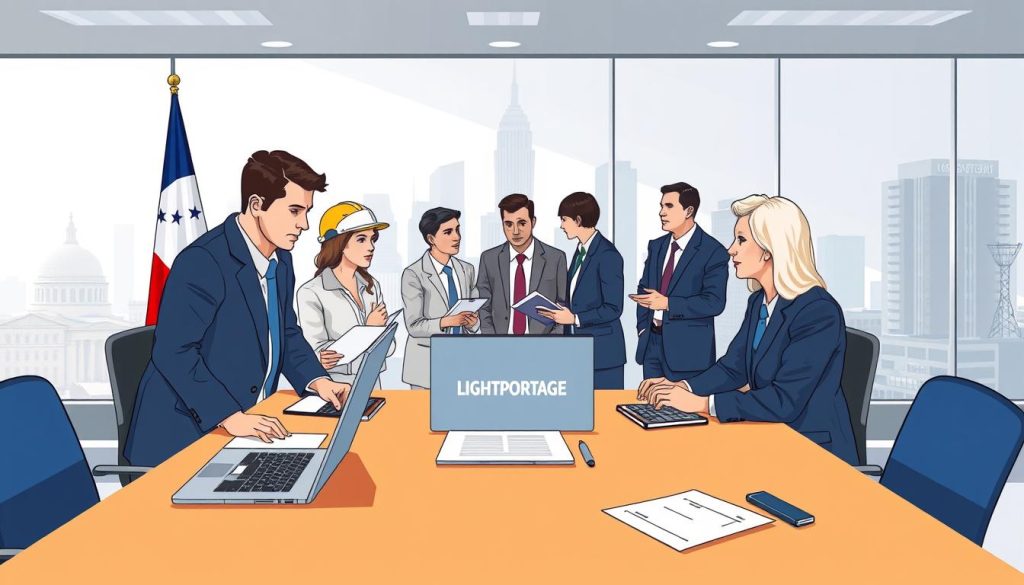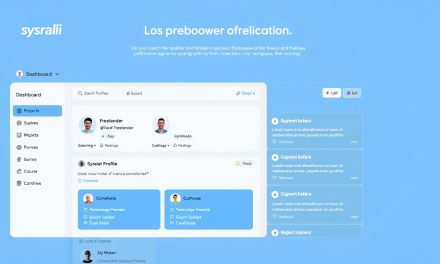One morning, Claire, a freelance carpenter in Lyon, arrived to fit cabinets only to find a new electric saw sitting where she usually worked. She paused, asked a few simple questions, and made a quick evaluation before starting. That short check kept her team safe and her client happy.
For independent professionals, a clear and practical risk assessment is your reliable foundation. It helps you spot hazards in your workplace, judge likelihood and severity, and choose sensible controls.
We will show how structured evaluations help you act before problems arise, protect health and clients, and keep your business steady. You will learn when to run an assessment—before new equipment, when processes change, or prior to unusual tasks—and how to document and share results with employees or partners.
For a practical guide on emergency preparedness and handling urgent safety situations as an independent worker, see our resource on managing emergencies and safety.
Table of Contents
Key Takeaways
- Simple checks prevent bigger problems and protect health and reputation.
- Answer core questions: what can happen, how likely, and how severe.
- Use evaluations before new tools, changed processes, or non-routine tasks.
- Document methods and share results with employees and partners.
- Structured reviews help management prioritize hazards and support business continuity.
What is risk assessment? Core concepts, definitions, and goals
Understanding how hazards and likelihood combine helps independent professionals make safer choices on the job.
Hazard refers to any source that could cause injury, harm to health, or damage to people, equipment, or the environment. Common categories include biological, chemical, ergonomic, physical, psychosocial, and safety hazards.
We define risk as the combination of probability (how likely an event is) and severity (the consequence if it happens). In simple terms: Risk = probability × severity.
Severity is often grouped: high (fatal or permanent disability), medium (sprain, dermatitis), and low (first aid only). Probability categories help too: high (likely yearly), medium (once in five years), low (once in a working life).
| Element | Meaning | Example | Action |
|---|---|---|---|
| Hazard | Source of harm | Unshielded saw blade | Identify hazards and eliminate if possible |
| Probability | How often it may occur | Likely once a year | Reduce exposure or alter process |
| Severity | Consequence of harm | Amputation vs. first aid | Prioritize high-severity controls |
| Goal | Purpose of assessments | Protect worker health | Document, prioritize, and prevent |
Good evaluations create awareness, show who may be affected, and guide controls. Consider exposure, task frequency, environment, and the person doing the work when you set the level risk.
Practical question to ask: Who could be harmed, how often, and what would the effects be? Answering that keeps your workplace compliant and your projects steady.
When to perform a risk assessment in the workplace
Knowing when to act keeps your site safer and your work on schedule.
Perform checks before new processes or activities start. Do them when products, machinery, tools, or equipment change. Update reviews if new information on harm or controls appears.
Triggers that require prompt reviews
- New or modified processes and equipment.
- Emerging hazards or fresh data on controls.
- Work in new sites, client locations, or temporary workplaces.
- Non-routine tasks such as maintenance, commissioning, shutdowns, or extreme weather events.
Distinguish routine from non-routine work. Routine checks keep daily activities steady. Dedicated reviews are needed for maintenance and design-stage decisions to prevent issues before they are built in.
Prioritize jobs with higher incident rates or worker concerns. Involve workers early, align with legal requirements, and let the employer set who updates documents and when. Focus first on high-consequence or frequently performed tasks so limited time targets what matters most.
The risk assessment process step by step
A practical workflow turns complex checks into simple, repeatable steps for every task.
Assemble a competent team that includes supervisors, workers, and safety representatives. Define the scope so the process stays focused and credible. Break jobs into tasks and map who performs each activity.
Identify hazards from observations, incident records, SDS, manufacturer data, and test results. List affected people—operators, visitors, and contractors—and note the equipment and workplace conditions.
Evaluate and decide
Use a simple matrix to score likelihood and severity consistently. Consider normal work and non-standard situations like maintenance or outages. Choose qualitative methods for routine tasks and call experts for complex scenarios.
- Apply the hierarchy of controls to eliminate or reduce hazards before relying on protective equipment.
- Document methods, data sources, evaluations, and conclusions for traceability.
- Communicate results clearly to workers and store records with version control.
Finally, set a review schedule to monitor measures, verify effectiveness, and update the process when activities or equipment change. Learn from incidents and near misses so your evaluations improve over time.
Methods and tools: from qualitative to quantitative techniques

A practical toolkit lets you scale evaluations from a quick check to detailed numeric studies.
Qualitative approaches combine severity and probability to rate hazards without complex math. A simple matrix maps likelihood against consequence to give categories from very low to immediately dangerous. Use this when you need a clear outcome fast and to decide whether to stop work, act soon, or monitor.
Semi-quantitative scoring
Semi-quantitative methods add numbers to qualitative factors so you can sort priorities. They help compare diverse hazards when you need more granularity but lack full data.
Quantitative Risk Assessment (QRA)
QRA is for large-scale contexts—oil, nuclear, or complex sites—where models, measured data, and probabilistic analysis support decisions. For most independents, lighter methods give faster, defensible results.
Supporting tools
- Bowtie and HAZOP to map causes and controls.
- FMEA, FTA, and LOPA for failure modes and barrier checks.
- Decision trees to guide choices when data are limited.
Practical tip: Balance the number of inputs with the decision you must make. Capture injury pathways and effects so your method matches the real operations and stays repeatable over time.
Risk control strategies and hierarchy of controls
Effective control strategies focus on preventing harm before people are exposed.
The goal is to remove hazards or limit exposure using a clear hierarchy: elimination, substitution, engineering, administrative measures, and PPE.
Elimination and substitution to reduce hazards
First, remove the hazard from the process where possible. If removal is not feasible, substitute a safer material or tool.
Engineering controls, administrative measures, and PPE
Engineering fixes isolate or separate workers from harm. Administrative measures change tasks, schedules, or instructions so employees face less danger. PPE is the last line and must be combined with other measures.
- Prioritize elimination and substitution at design time.
- Tailor controls to exposure patterns, environment, and equipment condition.
- Train workers and employees so use of controls reduces injury potential.
- Monitor effectiveness, maintain controls, and update plans within budget and timelines.
| Control Level | Primary Aim | Who it protects |
|---|---|---|
| Elimination | Remove hazard | Workers, employees |
| Engineering | Isolate or contain | Worker and environment |
| Administrative / PPE | Change behaviour / protect individuals | Workers at task |
Risk assessment in France: DUERP, stakeholders, and requirements

The DUERP is the formal tool that links workplace hazards, prevention measures, and who does what. It consolidates the hazard inventory and analysis results into one place and defines a prioritized annual prevention program. This program must list measures, indicators, estimated costs, resources to mobilize, and a clear timetable.
Who is involved
Who participates depends on company size. For firms under 300 staff, the ESC, any appointed safety employee, and the occupational health and prevention service take part.
For 300 or more, the ESC, the Committee on Health, Safety and Working Conditions, the safety employee, and occupational health services are all involved. The employer holds primary responsibility to coordinate.
What the DUERP must contain
The document must include a full hazard inventory, analysis results, and a yearly prevention program with actions, costs, and an implementation schedule. Append exposure data, showing the number and proportion of employees above thresholds for factors such as vibration or heat to enable C2P reporting.
Access, updates, and retention
The DUERP must be accessible on the workplace and to workers, former workers, staff delegates, and relevant bodies. Consultation rules must be displayed. Updates occur at least annually, on any change affecting health safety, or when new information appears. The ESC is consulted and every update is sent to the occupational health and prevention service. Keep all versions for 40 years.
| Company size | Main actors | Employer role |
|---|---|---|
| <300 employees | ESC, safety employee, occupational health | Consolidate and transmit |
| ≥300 employees | ESC, CHSCT, safety employee, occupational health | Coordinate consultation and updates |
Penalties: Failure to create or update the DUERP can trigger fines and, in case of obstruction, criminal sanctions. Keep documentation current to protect workers and meet legal requirements.
Documentation, training, and culture of safety
Good records and regular training make safety part of daily work, not an extra chore.
Start by documenting the process used, evaluations, and conclusions in one accessible file. Use clear templates so supervisors and employees find answers fast.
Creating clear records, templates, and version control
Standardize templates for each work type while leaving room for job-specific notes. Keep version control so the latest document shows who changed what and when.
- Store the process, data sources, and final conclusions in one place.
- Label versions with dates and author names for traceability.
- Link documentation to daily management so improvements are tracked and sustained.
Worker training, empowerment, and ongoing competency
Train new and experienced workers on hazards, controls, and protocols. Use scenario-based modules and modern platforms to tailor training to each worker’s tasks.
- Align training cadence with the work and management changes.
- Create feedback loops so workers can raise concerns early and safely.
- Schedule short refreshers to keep competency current and build a positive safety culture.
Practical step: For details on regulatory compliance and guidance, consult this resource on rules and compliance in France: legal compliance and guidance.
Conclusion
Turn inspection into action: make findings live in a clear plan with dates, owners, and next steps so decisions steer your budgets and schedule.
Prioritize by likelihood and severity, and pick controls that match the hazard and the task. Use the hierarchy of controls to favor elimination or engineering before administrative fixes and PPE.
In France, fold these steps into the DUERP so the workplace stays compliant and traceable. Document what you will do next, by when, and who will follow up.
Set a regular review cadence and keep communication open so every person can raise concerns fast. Use these evaluations as everyday management tools to protect health, workers, and your business with confidence.
FAQ
What does a comprehensive workplace assessment aim to achieve?
It identifies hazards, evaluates their probability and potential severity, and prioritizes controls to prevent injury, ensure legal compliance, and protect operational continuity.
How do hazard and probability differ, and why is exposure important?
A hazard is anything with potential to cause harm. Probability measures how likely an incident is. Exposure shows who or what is affected and how often. Together they shape the severity and guide control choices.
When should an evaluation be carried out in a business setting?
Perform one at project start, before new equipment or processes are introduced, after incidents or near-misses, and on a regular schedule to account for changes in activities or environment.
Who should take part in the assessment process?
Assemble a competent team including the employer, supervisors, worker representatives, and occupational health advisers. Their combined experience improves hazard identification and practical measures.
What steps make up the evaluation workflow?
Define scope, identify hazards and affected employees, estimate likelihood and consequence using a matrix, decide on control measures, document findings, and review effectiveness periodically.
What methods and tools can teams use to evaluate hazards?
Use qualitative tools like matrices or bowtie diagrams for quick prioritization, semi-quantitative scoring for prioritization, and quantitative techniques such as QRA for large-scale or complex exposures. Support with FMEA, FTA, and decision trees.
How do you choose appropriate control measures?
Follow the hierarchy: eliminate or substitute the hazard first, then apply engineering controls, implement administrative procedures, and finally provide personal protective equipment when other options cannot fully protect workers.
What documentation is essential after completing an evaluation?
Keep a clear record that lists hazards, analysis results, chosen controls, responsibilities, and review dates. Use templates, version control, and retention rules so information remains traceable and audit-ready.
What specific requirements apply in France for the DUERP and stakeholders?
Employers must maintain the DUERP (document listing workplace hazards and measures), involve the occupational health service and the Social and Economic Committee, provide access to the record, update it regularly, and retain traceability for inspections and reporting like C2P when applicable.
How should training and safety culture be integrated with assessments?
Provide targeted training on identified hazards and controls, empower employees to report concerns, and embed regular competency checks. A proactive culture ensures measures are followed and updated when conditions change.
How often must evaluations be reviewed and updated?
Review after any incident, when processes or equipment change, and at scheduled intervals determined by the level of exposure and business activity. Frequent monitoring ensures controls remain effective over time.
Which data sources improve analysis accuracy?
Use incident logs, exposure measurements, maintenance records, near-miss reports, and worker feedback. Combining quantitative data with field observation leads to better-informed decisions and targeted measures.
What are common pitfalls to avoid during the process?
Avoid incomplete scopes, lack of worker input, poor documentation, relying solely on PPE, and failing to monitor control effectiveness. These gaps reduce protection and increase liability.
How do employers demonstrate compliance and due diligence?
Keep thorough records, show regular reviews, train staff, document corrective actions, and engage relevant stakeholders. This evidence supports legal obligations and shows proactive management.





